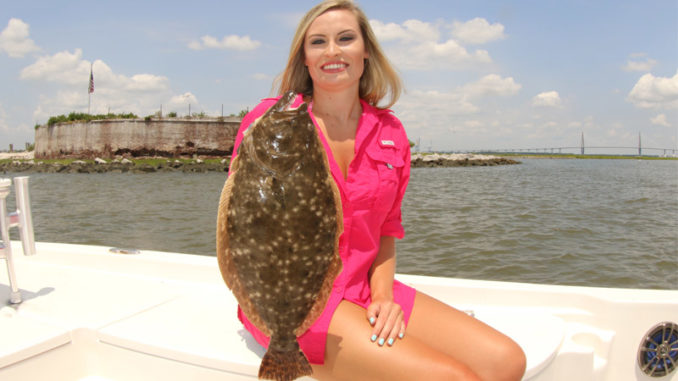
Across the southeast, flatfish are in trouble
According to researchers conducting a study from across North Carolina, South Carolina, Georgia, and Florida, flounder along the southeast coast are in trouble. The study, completed in 2019, has determined that southern flounder in particular are at an all-time low.
Southern flounder are not simply flatfish that live in the south. Our waters are home to three distinct subspecies of flatfish. Southern flounder is one of those, along with Gulf flounder and summer flounder. Determining one species from another can be difficult, especially for casual anglers.
Biologists deemed this study, which combined the efforts across all four states, as necessary because southern flounder in our region all belong to one population. They cross state lines throughout their lives.
After the study was completed, the SCDNR, like the other three states, decided to take a closer look at our own fishery. The agency conducted a comprehensive survey which compared data compiled over decades. Electrofishing surveys and trammel net surveys played a big part in this study.
The SCDNR has conducted those same type surveys since 1990, so they have plenty of data to pinpoint long-term trends. The results are clear, said Dr. Joey Ballenger, lead flounder biologist for South Carolina.
The numbers are unmistakable
“The data are clear, with evidence of declines across the entire state and catches in recent years at all-time lows,” said Ballenger. “This decline doesn’t seem to be confined to one area of the state. We observed it in all of our major estuaries.”
The studies showed an alarming trend. Not only are adult flounder numbers low, but so were young flounder. The sizes also showed a decline.
“Our results also suggest the average size of flounder encountered in our surveys has declined by over an inch over the last 10 years or so,” he said. “This is often a sign of heavy fishing pressure, since people are removing the fish as soon as they reach minimum size requirements.”
South Carolina has taken steps to help these fish for years. In 2007, the minimum size limit was 12 inches. It’s now 15 inches. And the bag limit, which was 20 per person, per day, is now 10. That’s probably helped minimize the decline. But it hasn’t shown any improvement in our flounder populations.
Earlier this year, North Carolina took drastic steps to help bring the flounder population back. They banned recreational anglers from keeping any flounder through at least the fall of 2020. This upset many North Carolina anglers. But, it’s the step their biologists deemed the best for the southern flounder population.
What changes are on the way for S.C. anglers?
South Carolina has made no mention of banning flounder fishing. But the writing is on the wall that some change is on the way. Perhaps it will be a reduction in the daily bag limit, an increase in the size limit, or the implementation of a slot like we have with redfish and black drum.
The SCDNR is tasked with protecting our natural resources and enforcing fish and game laws. But it’s the state legislature that makes those laws. In order for any changes to take place in our flounder fishing regulations, the SCDNR makes suggestions to lawmakers. And one thing the lawmakers look at is public input.
Writing to your lawmakers is always a good idea when wanting to voice your opinion. The SCDNR is offering anglers another way as well. Their survey allows input that goes beyond answering just multiple choice questions. And these surveys will play a role in what lawmakers decide. Click this link to complete the survey.
It’s easy to wave off a survey like this because you think your opinion won’t be taken into consideration. But that only guarantees that your voice won’t be heard. Changes are coming. What would you like them to be?
Click here to read about North Carolina’s flounder closure, which was implemented this past September.

Be the first to comment